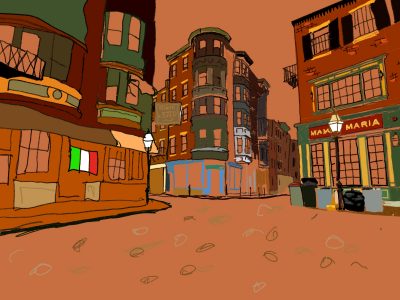Any Boston resident will boast about their city’s little Italy — and it’s no surprise why. A rich history paired with its authentic family-owned restaurants give this neighborhood its fame and frequent visitors. In 2016, however, the North End in all its Italian glory was met with its first major threat in nearly a century when Eataly opened its doors in Boston’s Prudential Center.
I can’t say that Eataly doesn’t have a good mission, and I won’t say that I haven’t explored its markets with wide eyes and an open stomach –– but my main concern is its place in Boston.

Every city has its own “little Italy,” but not many have it as renowned as we do in our North End. In an effort to not be misleading in my comparison, I acknowledge the concept of Eataly as one with authenticity as close as it can be from across the ocean, but I don’t believe its Italian authenticity is necessary in a city with a plethora of it.
Time for a history lesson –– Boston’s North End hasn’t always been Italian heaven. Before that, it was inhabited by the Irish who emigrated to Boston during the Great Famine era, at the time making up nearly 50% of the North End’s population. Following the Civil War, the Irish were met with Russian and Polish Jews, as well as the group that would soon come to dominate over the neighborhood: the Italians.
These two newcomers came to outnumber the Irish, and as the Jews moved to south Boston in the early 1900s, the Italians remained in their coastal corner of the city that would officially award them their own neighborhood. Thus, Boston’s historic little Italy was born.
Fast forward about 100 years, and Eataly came to fruition in Turin, Italy. One location in Italy turned into 45 locations across the globe, one of which resides in the heart of Boston’s Back Bay.
According to Eataly’s website, its goal is “to introduce a new way of distributing high quality agricultural products, inspired by leitmotifs such as sustainability, responsibility and sharing.” In fulfilling this mission, they aim to not only provide high-quality products, but to make them accessible and affordable.
There is no doubt that this can bring Italy to your fingertips, but can it really be that worthwhile if you can get it in 45 different corners of the world? Each location, with the same owners and vendors, likely has the same suppliers as well as the same products. Additionally, some restaurants in Eatalys across the globe have the same menu, made with those same ingredients — namely La Pizza & La Pasta and Terra, the two staple restaurants of the Boston location.
Though Terra is a bit more select, La Pizza & La Pasta is at every location of Eataly with the same menu. However, as I said before, I’m not against the greater Eataly conglomerate, rather I’m merely skeptical of its purpose in our city. At this point, what Eater Magazine calls the “italian megamarket” is just as good as any other chain to claim affordable authenticity.
And by comparison, it really isn’t that much more affordable. Using Giacomo’s in Boston’s North End as a contrast — which was recently named one of the best Italian restaurants in the country, according to Tasting Table — Eataly’s pasta dishes from La Pizza & La Pasta are $3 more expensive on average. This number must also be denoted by the fact that eight of the dishes included in Giacomo’s calculation have lobster or scallop in them, which inevitably forces the price to skyrocket. And somehow, Giacomo’s prices are still cheaper even without an ounce of high-end seafood in La Pizza & La Pasta’s dishes.
If affordability isn’t your concern, then let’s turn to authenticity. Giacomo’s is one of the many restaurants in the North End that are family owned and operated. The line down the block made up by tourists and locals alike can speak to its popularity, with everything homemade to be paid for in cash only.
Though not quite as renowned as the famous Giacomo’s, La Famiglia Giorgio’s can contribute its fair share of authenticity to Boston’s North End. A traditional-style atmosphere comparable to “nonna’s,” La Famiglia Giorgio’s brings grandma’s cooking to the children and grandchildren of Boston. Can it really get more authentic than that? Certainly not at a place where they sell Pressed Juice (yes, Eataly really does serve Pressed Juice).
A good meal as close to home-cooked as we can get as college students is grandma’s Italian cooking in the North End. In all of this comparison, I know one thing for certain — my dinners away from the dining hall won’t be wasted on Eataly. Take me to little Italy.





















































































































T .Ruth Tellar • Oct 22, 2023 at 9:31 pm
Giacomos is overpriced, mediocre and is meant for tourists, because why would I line up like some Jabone – next thing you will say Mikes Pastry is worth it – sorry also overpriced,
Eataly isn’t meant to replicate Italy, it’s more of how an Italian (Mario Battali) marketed the idea of what Italy is to non Italians and oh cool you can walk around with a glass of wine and look at overpriced olive oils,
As someone who has been to Italy, the North send itself fails to capture anything but the Italian American experience, not the Italian experience.
The North End has some amazing food, don’t get me wrong but your two examples are mid at best.